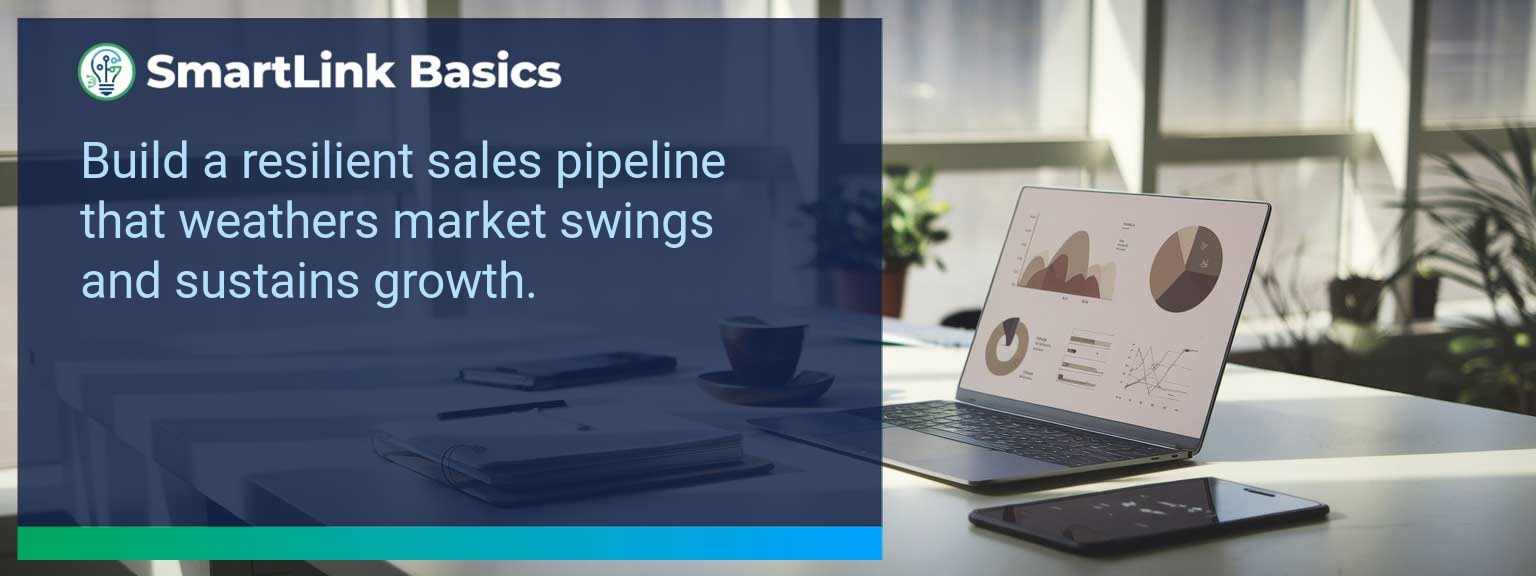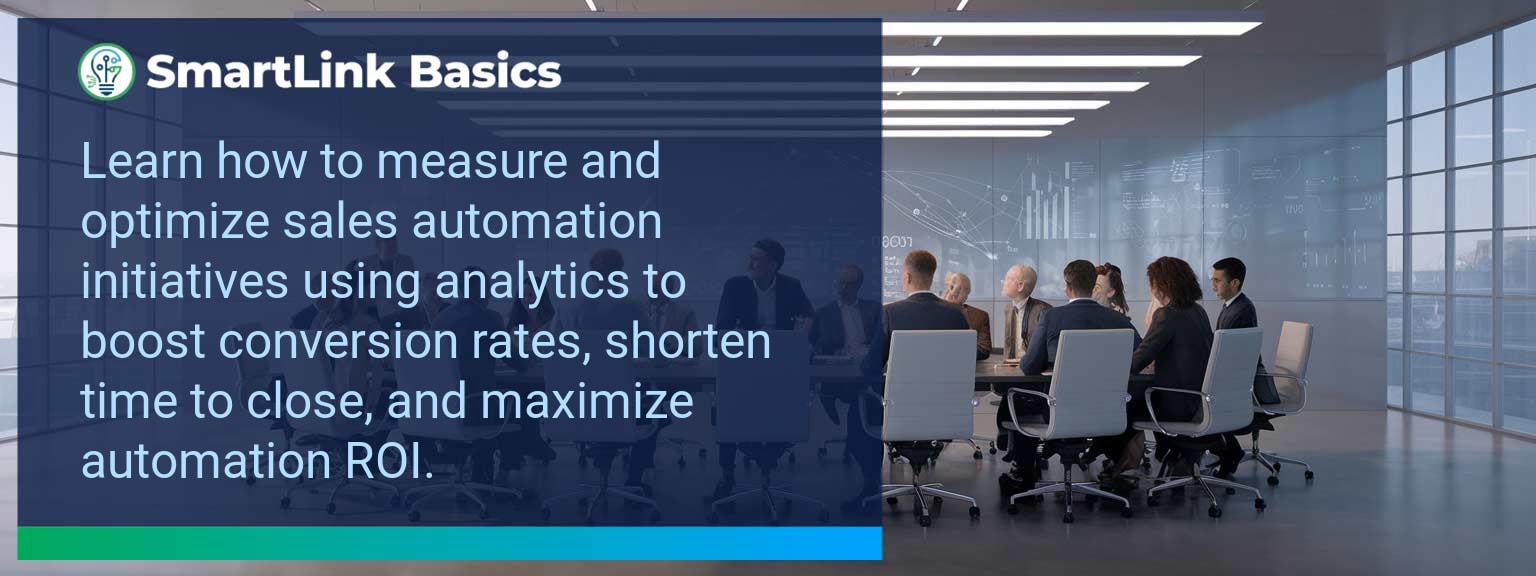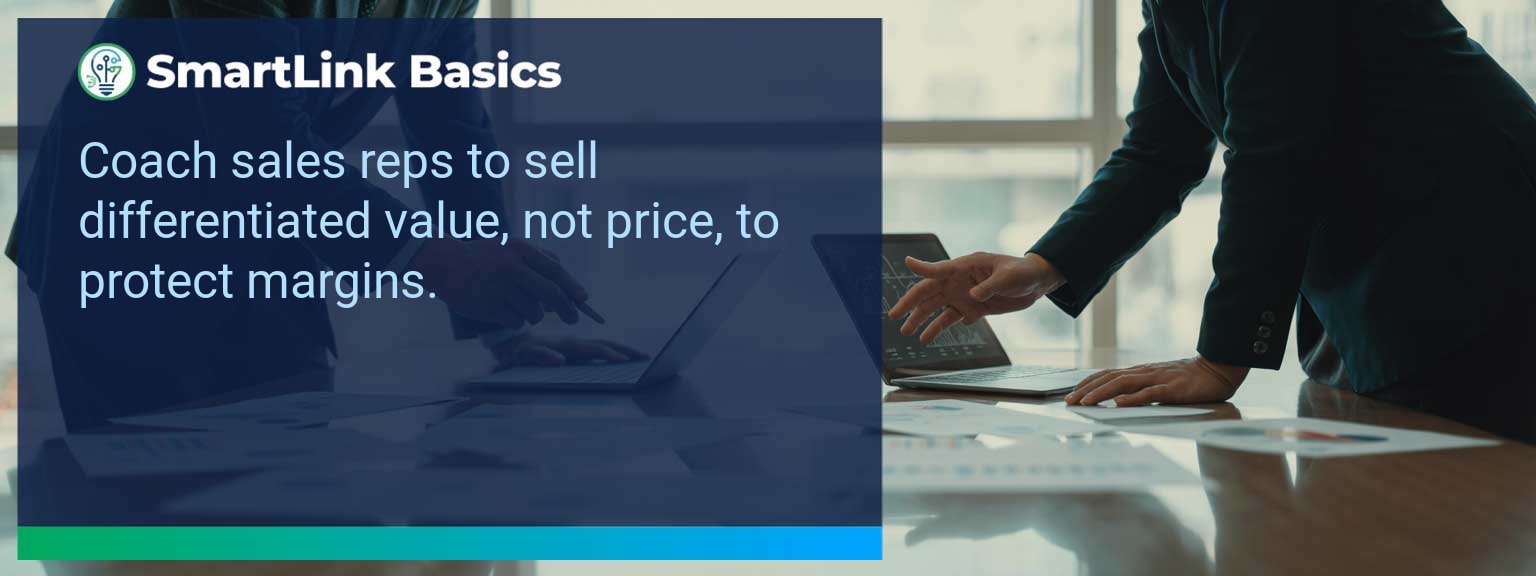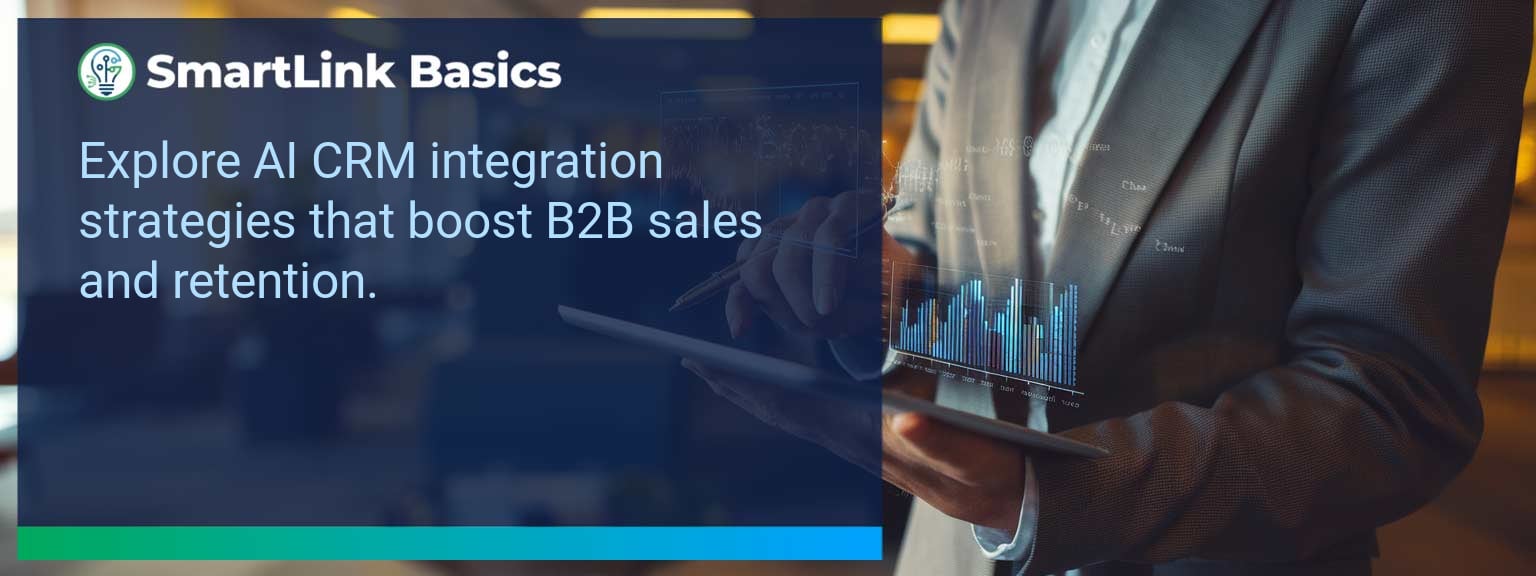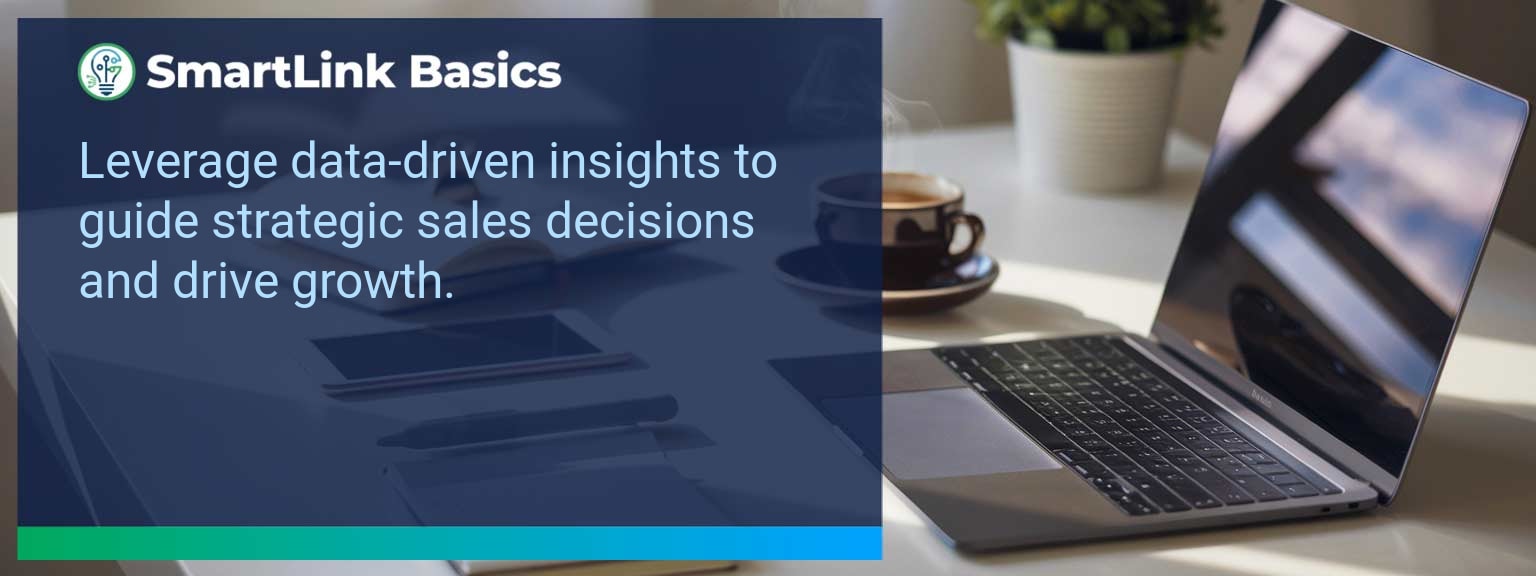Industry data shows that organizations adopting AI-driven automation achieve cost reductions of up to 30% while accelerating sales cycles by 20% or more (McKinsey, 2024). For sales leaders, AI automated workflows now define competitive advantage, enabling teams to reallocate time from repetitive tasks to high-value engagements. At SmartLink Basics, we help decision-makers implement these systems strategically, ensuring they integrate with existing revenue operations. In this article, you’ll see how AI automated workflows power business outcomes, the common obstacles that slow adoption, and practical steps to optimize processes. You’ll walk away with proven examples, a 90-day action blueprint, and measurable KPIs to track results.
- Automate repetitive administrative and CRM updates with AI.
- Integrate machine learning to personalize outreach at scale.
- Streamline approvals, quotes, and contract workflows for speed.
- Use predictive analytics to prioritize sales opportunities.
- Track adoption and performance with targeted metrics.
AI Automated Workflows: What Changed and Why It Matters
AI adoption has shifted from experimental to operational, making automated workflows a standard in high-performing sales organizations. The real advantage lies in combining workflow automation with artificial intelligence workflows to optimize every step of the revenue process. Sales leaders now use AI to synchronize touchpoints, reduce manual inputs, and ensure faster execution. For example, a B2B SaaS leader introduced automated lead enrichment and routing, cutting qualification time by 60%. Actionable insight: Audit processes for time-intensive handoffs and apply AI where repeatability is high.Redesign the Revenue Operating System With AI Automated Workflows
ICP, Segmentation, and Targeting AI-enabled segmentation uses historical wins, firmographic, and behavioral data to dynamically update ICP profiles. This ensures targeting precision without quarterly re-work. Pipeline Architecture Automated workflows push opportunities through the right stages based on engagement signals. AI flags at-risk deals for intervention. Plays and Messaging Integrated automation tools deliver personalized sequences based on buyer activity, increasing relevance at every touchpoint. Operating Cadence AI schedules follow-ups, forecast calls, and account reviews based on actual pipeline movement rather than static calendars. Actionable insight: Implement automation that adapts in real-time to both internal and buyer-driven events.Common Obstacles To Achieving Seamless Automation
The most frequent challenges are fragmented systems, inconsistent data quality, and cultural resistance. Without a unified data layer, automation amplifies errors rather than solving them. Coca-Cola Europacific Partners reported needing a full data governance upgrade before AI could improve sales workflows. Leaders must first assess infrastructure readiness and train teams to trust AI-influenced recommendations. Actionable insight: Before deployment, establish clean data practices and a single source of truth.Implementing AI To Optimize Workflows
Effective deployment of AI process optimization starts with mapping current-state processes, identifying friction points, and matching them with automation tools. For example, automating proposal generation based on CRM opportunity data can reduce turnaround from three days to one hour. Solutions combining business process automation platforms with machine learning integration enable continuous performance improvement. Actionable insight: Pilot in one high-impact stage, measure, and then expand.Tangible Benefits From Automated Processes
The benefits extend beyond time savings — sales leaders gain a scalable system. Tangible outcomes include faster quote-to-close, higher lead conversion, and better forecast accuracy. A manufacturing firm implemented AI-assisted order processing and cut errors by 40%, improving on-time delivery rates. Actionable insight: Track both speed and accuracy to measure workflow automation effectiveness.Metrics That Matter
| Category | Metric | Definition | Target |
|---|---|---|---|
| Leading | Workflow Completion Rate | % of automated sequences executed without manual intervention | 95%+ |
| Leading | AI Suggestion Adoption Rate | % of AI-generated action recommendations executed by reps | 80%+ |
| Lagging | Cycle Time Reduction | Decrease in time from lead entry to closed-won | 20%+ |
| Lagging | Revenue Per Rep | Average sales revenue generated per sales rep per quarter | +15% YoY |
| Quality | Automation Error Rate | % of workflows that trigger incorrect outcomes | <1% |
| Quality | Customer Satisfaction Post-Automation | Average CSAT score after automation implementation | ≥ 4.5/5 |
Innovations And Next Steps For AI Automation
Emerging capabilities like AI-generated playbooks, intent-driven dynamic routing, and integrated AR for virtual product demos are shaping the next wave of sales automation. Companies integrating these tools early will outpace competitors in speed and personalization. Actionable insight: Stay ahead by testing emerging automation features quarterly and aligning them with evolving buyer expectations.Get the 90-day plan, coaching rubric, and dashboard template to operationalize AI in your enablement program.
Turning AI Automation Into a Revenue Multiplier
AI automated workflows are now a strategic lever for predictable, scalable growth. This guide outlined current applications, adoption challenges, a 90-day execution plan, and measurable success criteria. To make automation pay off, sales leaders should integrate tools into one cohesive operating system and review results monthly for continuous improvement. Access more AI-driven sales enablement resources from SmartLink Basics to design a high-performance automation strategy. Sales leaders who consistently outperform their competitors understand that innovation is not an optional skill — it is a survival requirement. At SmartLink Basics, we see organizations increase revenue velocity when their leadership teams actively cultivate fresh ideas, agile problem-solving, and disciplined execution. In an environment where sales cycles are tightening and buyer expectations are increasing, effective sales leadership strategies determine whether a team adapts quickly or falls behind. This article breaks down actionable approaches to spark team creativity, eliminate stagnation, and embed innovation in your sales culture. You will learn how to identify performance bottlenecks, apply targeted leadership interventions, and achieve measurable wins that sustain momentum.- Foster a culture of creative problem-solving through structured collaboration.
- Redesign sales processes to match market and customer evolution.
- Use targeted coaching to close skill gaps and boost team confidence.
- Balance consistent operating cadence with flexibility for innovation.
- Measure both leading and lagging indicators for balanced performance insights.
Overcoming Stagnation In Sales Teams
Even high-performing teams can lose momentum when growth plateaus, territories feel saturated, or targets seem unattainable. Prolonged periods without innovation encourage process complacency and reactive selling. Stagnation drains energy, reduces creativity, and can push top performers to seek more dynamic environments. One effective approach is diagnosing whether the bottleneck is in market opportunity, skill proficiency, or leadership alignment. For example, a B2B SaaS company revamped its prospecting guidelines and saw a 14% increase in qualified demos within three months. Actionable insight: Build quarterly performance diagnostics to identify early indicators of stagnation, and reallocate leadership attention to these priority areas.Implementing Targeted Leadership Approaches
Strong leaders replace one-size-fits-all management with tailored interventions. Choosing the right sales leadership strategies involves aligning leadership style, market conditions, and the maturity of the sales team. Key techniques include job shadowing top performers to capture best practices, running collaborative deal reviews to elevate strategic thinking, and setting distinct innovation challenges for sub-teams. A global manufacturing firm used this approach to test new negotiation frameworks, which improved average deal size by 11%. Actionable insight: Assign clear responsibility for experimentation within micro-teams and reward both successful innovations and well-documented learnings from failed attempts.Achieving Breakthrough Sales Performance
Breakthrough results come from the systematic alignment of vision, capability, and execution. Leaders who drive significant sales growth often refine focus before scaling effort, ensuring resources amplify proven approaches rather than spreading too thin. For instance, narrowing target account lists to those with the strongest propensity to buy can lift win rates without increasing workload. One enterprise software firm reduced its account coverage by 20% yet achieved a 22% revenue increase through focused pursuit. Actionable insight: Pair opportunity concentration with an optimized operating cadence to unify team energy around the most impactful activities.Preparing Teams For Future Challenges
Forward-thinking sales management anticipates disruption, whether from technology shifts, competitor repositioning, or buyer behavior changes. Building resilience means embedding adaptability in routines, not adding it as a reactive measure. Practical steps include forming a cross-functional market-response unit, increasing exposure to emerging buyer segments, and maintaining scenario-based playbooks. These measures ensure the team can pivot without performance collapse during unforeseen events. Actionable insight: Review future-scenario plans twice yearly, integrating emerging data into decision-making frameworks.Metrics That Matter
| Category | Metric | Definition | Target |
|---|---|---|---|
| Leading | Qualified Pipeline Growth | Rate of increase in qualified opportunities per quarter | +15% QoQ |
| Lagging | Revenue Attainment | Actual revenue vs target | ≥ 100% |
| Quality | Forecast Accuracy | Precision of forecasted revenue to actual | ±5% |
Get the 90-day plan, coaching rubric, and dashboard template to operationalize AI in your enablement program.





